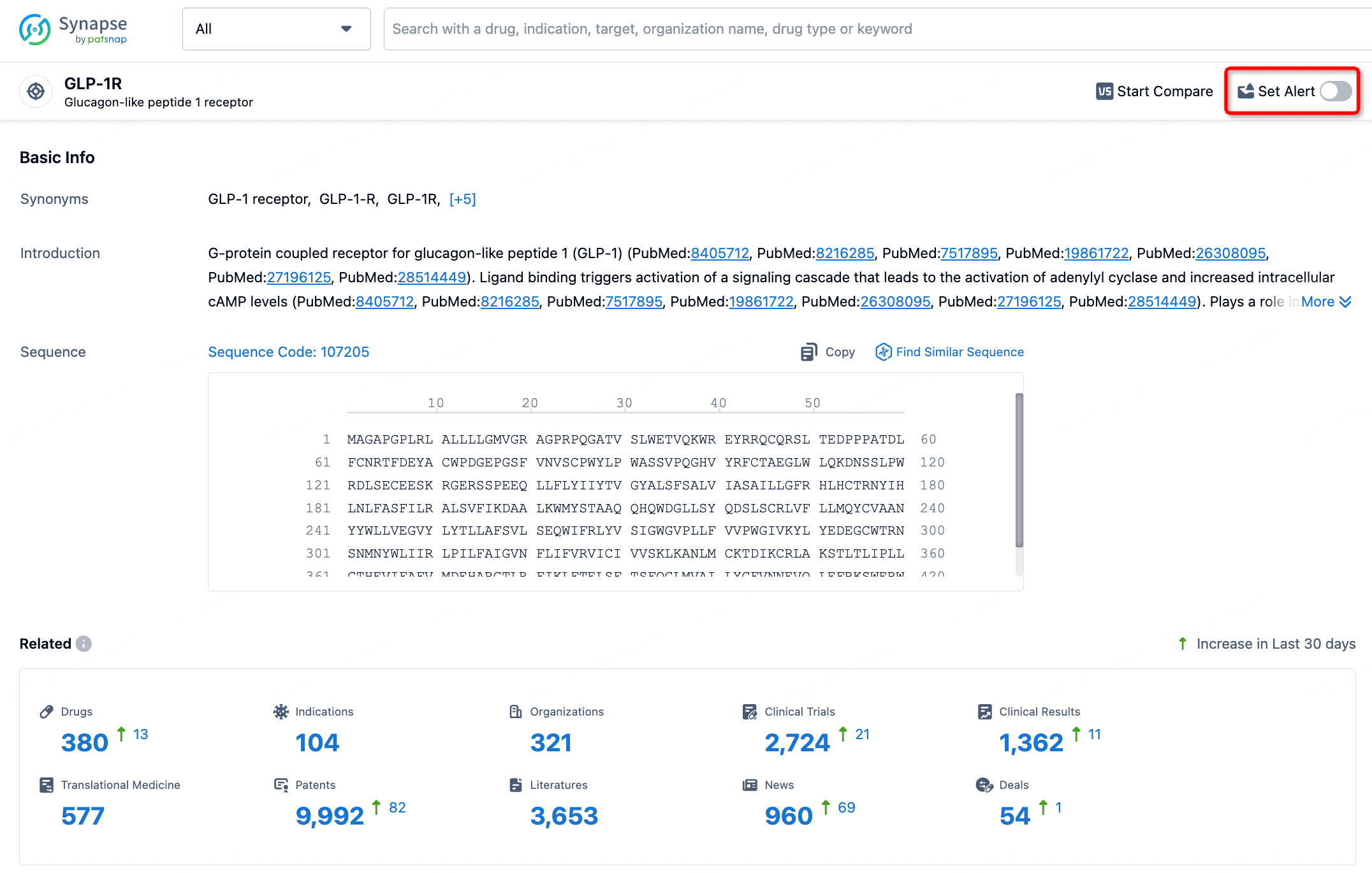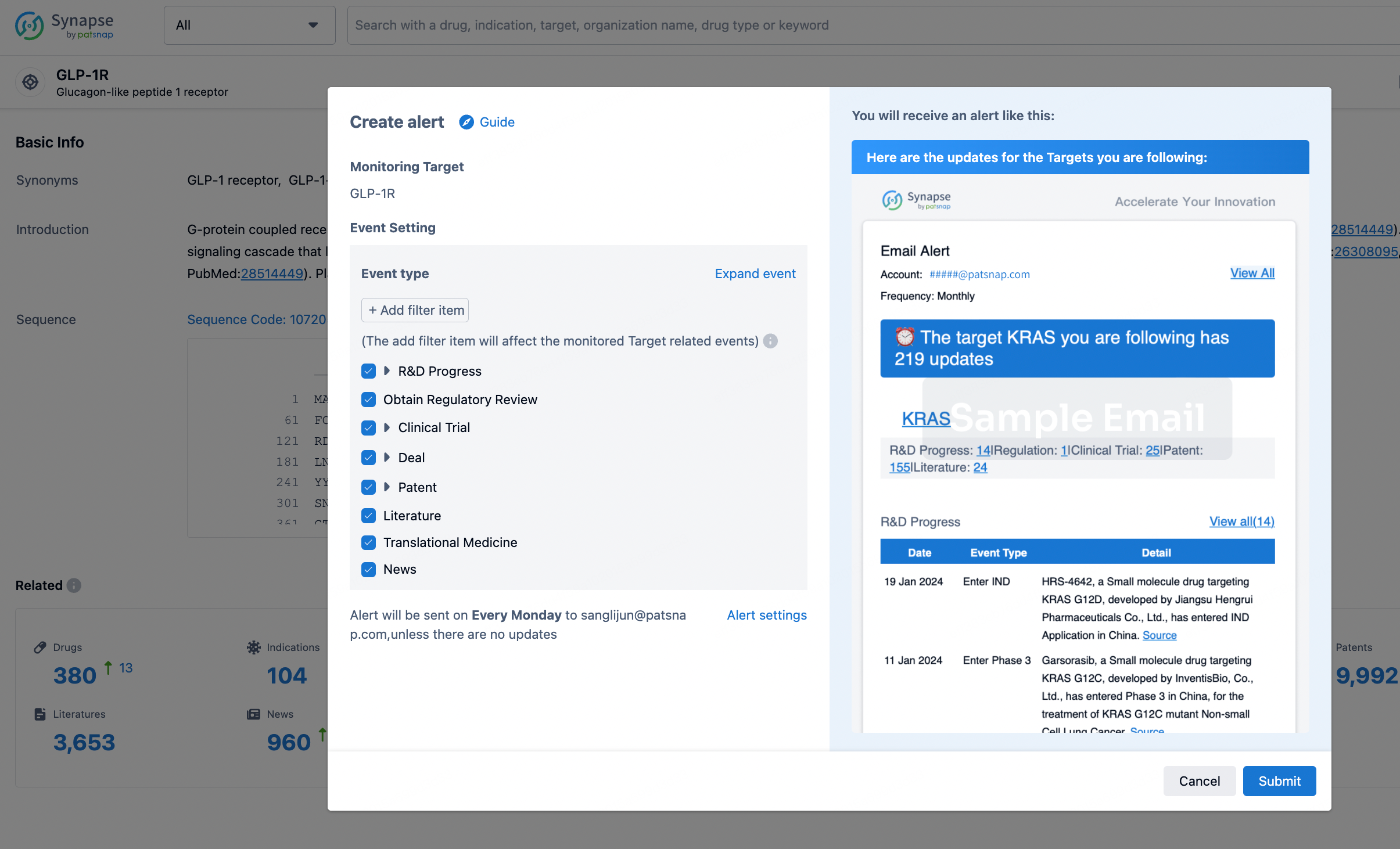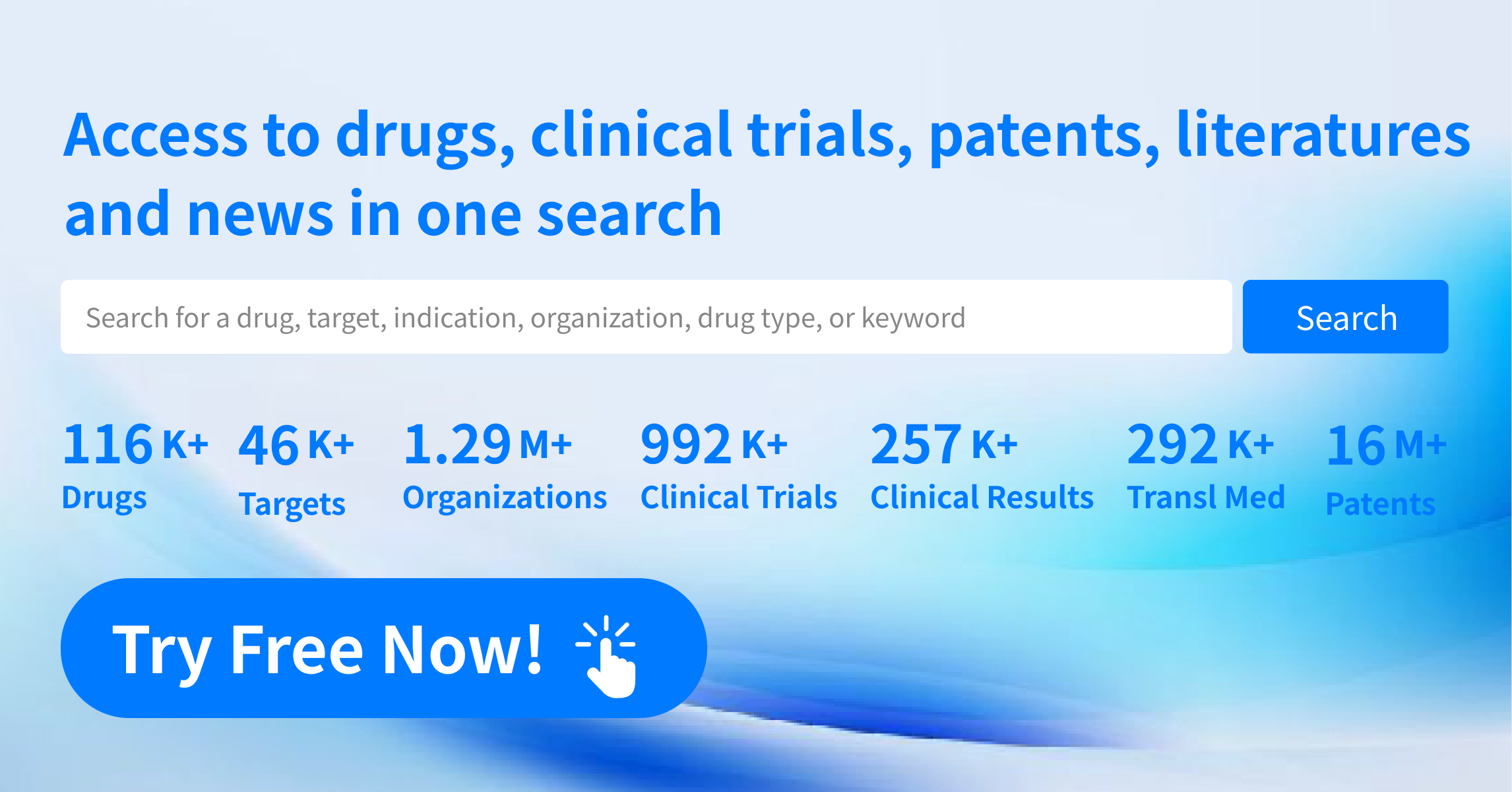Request Demo
What are HIF-2α modulators and how do they work?
25 June 2024
Introduction to HIF-2α modulators
Hypoxia-inducible factor 2-alpha (HIF-2α) is a critical transcription factor that plays a significant role in cellular response to low oxygen levels, or hypoxia. When tissues experience hypoxia, HIF-2α activates a variety of genes involved in processes such as angiogenesis, erythropoiesis, and energy metabolism, enabling cells to survive and adapt to these unfavorable conditions. Dysregulation of HIF-2α has been implicated in several pathological conditions, including cancer, chronic kidney disease, and pulmonary hypertension. Thus, modulating the activity of HIF-2α has emerged as a promising therapeutic strategy. HIF-2α modulators are a class of compounds designed to regulate the activity of this transcription factor, offering potential benefits in the treatment of diseases associated with hypoxia.
How do HIF-2α modulators work?
HIF-2α activity is primarily regulated through its stability and interaction with other proteins. Under normal oxygen levels, HIF-2α is rapidly degraded by the proteasome system, a process initiated by its hydroxylation and subsequent recognition by the von Hippel-Lindau (VHL) tumor suppressor protein, which tags it for degradation. However, under hypoxic conditions, the hydroxylation process is inhibited, leading to the stabilization and accumulation of HIF-2α. Stabilized HIF-2α translocates to the nucleus, where it dimerizes with HIF-1β and binds to hypoxia response elements (HREs) in the promoter regions of target genes, initiating their transcription.
HIF-2α modulators work by either inhibiting or enhancing this pathway. Inhibitors of HIF-2α typically aim to prevent its dimerization with HIF-1β or block its binding to DNA, thereby reducing the transcription of hypoxia-responsive genes. These inhibitors can be small molecules designed to specifically target the HIF-2α protein or its interaction domains. Conversely, activators of HIF-2α aim to mimic hypoxic conditions or stabilize HIF-2α under normoxic conditions, thereby boosting its activity. This can be achieved through various mechanisms, such as inhibiting the prolyl hydroxylases responsible for HIF-2α hydroxylation or enhancing the protein's interaction with coactivators.
What are HIF-2α modulators used for?
The therapeutic potential of HIF-2α modulators spans several medical fields, owing to the broad role of HIF-2α in disease processes.
1. **Cancer Treatment**: One of the most promising applications of HIF-2α inhibitors is in the treatment of cancer. Tumors often experience hypoxic conditions due to their rapid growth, which outstrips their blood supply. This hypoxia drives the stabilization of HIF-2α, promoting angiogenesis and metabolic adaptation that supports tumor survival and growth. By inhibiting HIF-2α, it is possible to disrupt these adaptive processes, potentially slowing tumor growth and enhancing the effectiveness of other treatments. For example, Belzutifan (MK-6482) is a HIF-2α inhibitor that has shown promise in clinical trials for treating renal cell carcinoma, a cancer type known for its reliance on HIF-2α signaling.
2. **Chronic Kidney Disease (CKD)**: In CKD, reduced oxygen availability in the kidneys leads to chronic hypoxia, contributing to disease progression. HIF-2α activators could potentially promote erythropoiesis and improve oxygen transport, offering therapeutic benefits. Roxadustat is one such drug that acts as a prolyl hydroxylase inhibitor, thereby stabilizing HIF-2α and increasing erythropoietin production, which stimulates red blood cell formation.
3. **Pulmonary Hypertension**: This condition, characterized by high blood pressure in the lungs, can be exacerbated by hypoxia-induced vascular remodeling mediated by HIF-2α. Modulating HIF-2α activity might mitigate these pathological changes, providing a novel therapeutic approach.
4. **Anemia**: Beyond CKD-related anemia, HIF-2α modulators can be useful in treating anemia associated with other chronic diseases. By enhancing erythropoietin production through HIF-2α activation, these modulators can improve red blood cell counts and alleviate symptoms.
In conclusion, HIF-2α modulators represent a versatile and promising class of therapeutic agents with applications across multiple disease areas. As our understanding of the precise mechanisms and effects of HIF-2α modulation improves, it is likely that these agents will become increasingly integral to the treatment of hypoxia-related conditions.
Hypoxia-inducible factor 2-alpha (HIF-2α) is a critical transcription factor that plays a significant role in cellular response to low oxygen levels, or hypoxia. When tissues experience hypoxia, HIF-2α activates a variety of genes involved in processes such as angiogenesis, erythropoiesis, and energy metabolism, enabling cells to survive and adapt to these unfavorable conditions. Dysregulation of HIF-2α has been implicated in several pathological conditions, including cancer, chronic kidney disease, and pulmonary hypertension. Thus, modulating the activity of HIF-2α has emerged as a promising therapeutic strategy. HIF-2α modulators are a class of compounds designed to regulate the activity of this transcription factor, offering potential benefits in the treatment of diseases associated with hypoxia.
How do HIF-2α modulators work?
HIF-2α activity is primarily regulated through its stability and interaction with other proteins. Under normal oxygen levels, HIF-2α is rapidly degraded by the proteasome system, a process initiated by its hydroxylation and subsequent recognition by the von Hippel-Lindau (VHL) tumor suppressor protein, which tags it for degradation. However, under hypoxic conditions, the hydroxylation process is inhibited, leading to the stabilization and accumulation of HIF-2α. Stabilized HIF-2α translocates to the nucleus, where it dimerizes with HIF-1β and binds to hypoxia response elements (HREs) in the promoter regions of target genes, initiating their transcription.
HIF-2α modulators work by either inhibiting or enhancing this pathway. Inhibitors of HIF-2α typically aim to prevent its dimerization with HIF-1β or block its binding to DNA, thereby reducing the transcription of hypoxia-responsive genes. These inhibitors can be small molecules designed to specifically target the HIF-2α protein or its interaction domains. Conversely, activators of HIF-2α aim to mimic hypoxic conditions or stabilize HIF-2α under normoxic conditions, thereby boosting its activity. This can be achieved through various mechanisms, such as inhibiting the prolyl hydroxylases responsible for HIF-2α hydroxylation or enhancing the protein's interaction with coactivators.
What are HIF-2α modulators used for?
The therapeutic potential of HIF-2α modulators spans several medical fields, owing to the broad role of HIF-2α in disease processes.
1. **Cancer Treatment**: One of the most promising applications of HIF-2α inhibitors is in the treatment of cancer. Tumors often experience hypoxic conditions due to their rapid growth, which outstrips their blood supply. This hypoxia drives the stabilization of HIF-2α, promoting angiogenesis and metabolic adaptation that supports tumor survival and growth. By inhibiting HIF-2α, it is possible to disrupt these adaptive processes, potentially slowing tumor growth and enhancing the effectiveness of other treatments. For example, Belzutifan (MK-6482) is a HIF-2α inhibitor that has shown promise in clinical trials for treating renal cell carcinoma, a cancer type known for its reliance on HIF-2α signaling.
2. **Chronic Kidney Disease (CKD)**: In CKD, reduced oxygen availability in the kidneys leads to chronic hypoxia, contributing to disease progression. HIF-2α activators could potentially promote erythropoiesis and improve oxygen transport, offering therapeutic benefits. Roxadustat is one such drug that acts as a prolyl hydroxylase inhibitor, thereby stabilizing HIF-2α and increasing erythropoietin production, which stimulates red blood cell formation.
3. **Pulmonary Hypertension**: This condition, characterized by high blood pressure in the lungs, can be exacerbated by hypoxia-induced vascular remodeling mediated by HIF-2α. Modulating HIF-2α activity might mitigate these pathological changes, providing a novel therapeutic approach.
4. **Anemia**: Beyond CKD-related anemia, HIF-2α modulators can be useful in treating anemia associated with other chronic diseases. By enhancing erythropoietin production through HIF-2α activation, these modulators can improve red blood cell counts and alleviate symptoms.
In conclusion, HIF-2α modulators represent a versatile and promising class of therapeutic agents with applications across multiple disease areas. As our understanding of the precise mechanisms and effects of HIF-2α modulation improves, it is likely that these agents will become increasingly integral to the treatment of hypoxia-related conditions.
How to obtain the latest development progress of all targets?
In the Synapse database, you can stay updated on the latest research and development advances of all targets. This service is accessible anytime and anywhere, with updates available daily or weekly. Use the "Set Alert" function to stay informed. Click on the image below to embark on a brand new journey of drug discovery!
AI Agents Built for Biopharma Breakthroughs
Accelerate discovery. Empower decisions. Transform outcomes.
Get started for free today!
Accelerate Strategic R&D decision making with Synapse, PatSnap’s AI-powered Connected Innovation Intelligence Platform Built for Life Sciences Professionals.
Start your data trial now!
Synapse data is also accessible to external entities via APIs or data packages. Empower better decisions with the latest in pharmaceutical intelligence.


